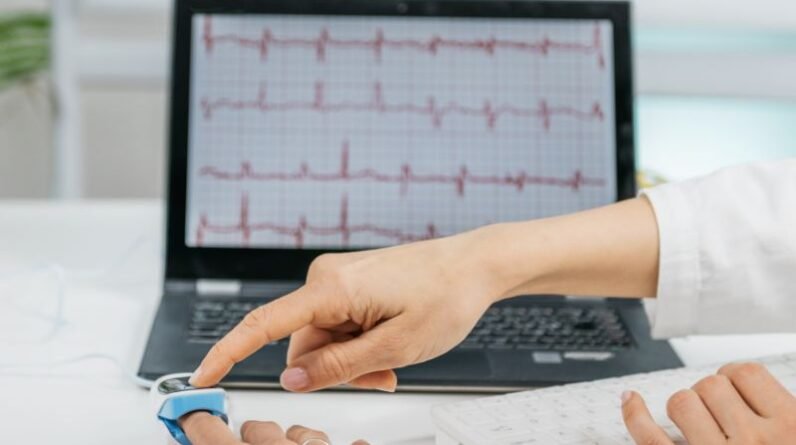
When it comes to addressing our physical health, the mind often takes a backseat to the body. But what if I told you there’s a way to actively engage the mind in improving our bodily functions?
That’s where biofeedback techniques come into play. It’s an intriguing approach that has piqued our curiosity, offering a unique way to harness the power of the mind to enhance our overall well-being.
But does it really work? And how exactly does it bridge the gap between our mental and physical states? Let’s explore this fascinating topic together.
What Is Biofeedback?
Biofeedback is a therapy that measures physiological signals from the body and provides feedback through various sensory means, such as visual, auditory, haptic, or virtual reality. This therapy aims to enhance our awareness and control over mental and physical processes that are typically involuntary, such as heart rate, muscle tension, and the activity of the parasympathetic nervous system. By learning to manipulate these physiological functions, biofeedback can be a powerful tool for managing stress, improving mental and physical health, and enhancing overall well-being.
Through biofeedback therapy, individuals receive real-time information about their body’s responses, allowing them to understand how their thoughts, emotions, and behaviors influence their physiological functions. This knowledge empowers individuals to implement specific techniques, including altering breathing patterns, relaxing muscles, and practicing mindfulness, to achieve desired changes in their body’s responses. By harnessing the mind-body connection, biofeedback techniques offer a non-invasive and safe approach to addressing conditions such as anxiety, depression, chronic pain, high blood pressure, and insomnia.
Biofeedback serves as a bridge between the mental and physical aspects of our health, providing a pathway for individuals to actively participate in their well-being and cultivate a greater sense of control over their physiological processes.
Procedure and Techniques
When implementing biofeedback techniques, understanding and awareness of one’s physiological responses are crucial for effective practice and management of bodily functions.
The procedure and techniques involved in biofeedback therapy include:
– Learning to interpret physiological signals, such as heart rate variability, muscle tension, and skin temperature, through noninvasive monitoring using devices like electroencephalogram (EEG) or electromyography (EMG). This allows individuals to gain insight into their body’s responses and recognize patterns that may indicate stress or relaxation, leading to improved mind-body techniques for self-regulation and wellness.
– Utilizing operant conditioning to reinforce desired physiological changes, such as promoting a relaxation response by consciously altering breathing patterns or focusing on positive physical sensations. This process empowers individuals to improve health and wellness by training themselves to regulate their bodily functions, leading to reduced stress, anxiety, and physical discomfort.
Risks and Benefits
After understanding the potential benefits of biofeedback therapy and the importance of active participation, it’s essential to consider the potential risks and benefits associated with this noninvasive treatment.
Applied Psychophysiology and Biofeedback, a medical field focused on improving quality of life, has extensively researched the efficacy of biofeedback. The benefits of biofeedback therapy are significant, particularly for individuals suffering from chronic pain or seeking to improve their mental health. Through learning to control physiological responses, biofeedback can improve overall well-being and reduce stress.
However, it’s important to note that as a noninvasive form of alternative medicine, biofeedback therapy doesn’t pose any known risks. It’s a safe and complementary treatment that can be used in conjunction with traditional medical approaches without concern for potential complications or side effects.
Therefore, individuals seeking to enhance their health and well-being can feel confident in exploring biofeedback therapy as a valuable addition to their overall wellness strategy.
Recovery and Frequency
Exploring the relationship between physiological recovery and frequency is essential in understanding the effectiveness of biofeedback techniques for improving overall well-being. When delving into the intricate connection between recovery and frequency, several key points come to light:
– Biofeedback Helps Both Physically and Mentally: Biofeedback techniques aid in improving physical and mental well-being by allowing individuals to gain control over physiological responses, such as heart rate variability and brain activity.
– Guided Imagery and Deep Breathing: Guided imagery and deep breathing exercises can lead to improved mood, reduced stress, and enhanced emotional balance, thereby contributing to overall recovery and frequency regulation.
Understanding the interplay between recovery and frequency is crucial, especially for individuals dealing with medical conditions. By honing in on these factors, biofeedback can be utilized as a powerful tool to promote improved physical and emotional well-being.
Whether through monitoring galvanic skin response or regulating breathing frequency, biofeedback techniques offer a holistic approach to wellness, ultimately aiding in achieving optimal recovery and frequency regulation.
When to Seek Medical Advice
How can individuals determine if seeking medical advice is necessary while undergoing biofeedback therapy?
It’s crucial to seek medical advice if you experience new or worsening symptoms during biofeedback therapy. While biofeedback techniques are generally safe, it’s important to consult a healthcare professional if you have a preexisting medical condition or concerns about its suitability for your specific health situation. Additionally, if you experience unexpected side effects or adverse reactions, it’s essential to seek medical advice promptly.
If you’re pregnant or planning to become pregnant, discussing biofeedback therapy with a healthcare provider is paramount. Biofeedback therapy can be highly effective for stress management, chronic stress, and anxiety, as well as to relieve pain and regulate stress hormones. However, it’s essential to prioritize your overall health and well-being by seeking medical advice when necessary.
A healthcare professional can provide personalized guidance and ensure that biofeedback therapy aligns with your medical needs. Always remember that your healthcare provider is a valuable resource in determining the best course of action for your health.
Conclusion
Studies have shown that biofeedback can reduce anxiety by 60% and lower blood pressure by 30%. With its noninvasive monitoring and personalized feedback, biofeedback empowers individuals to take control of their bodily functions and improve their overall well-being.
It’s a valuable tool in the world of alternative therapies.






